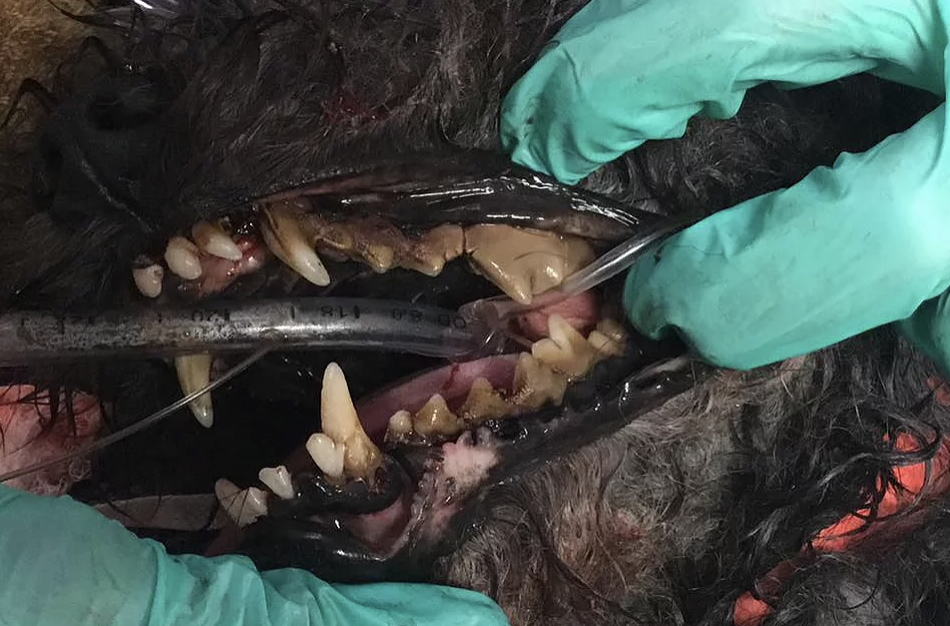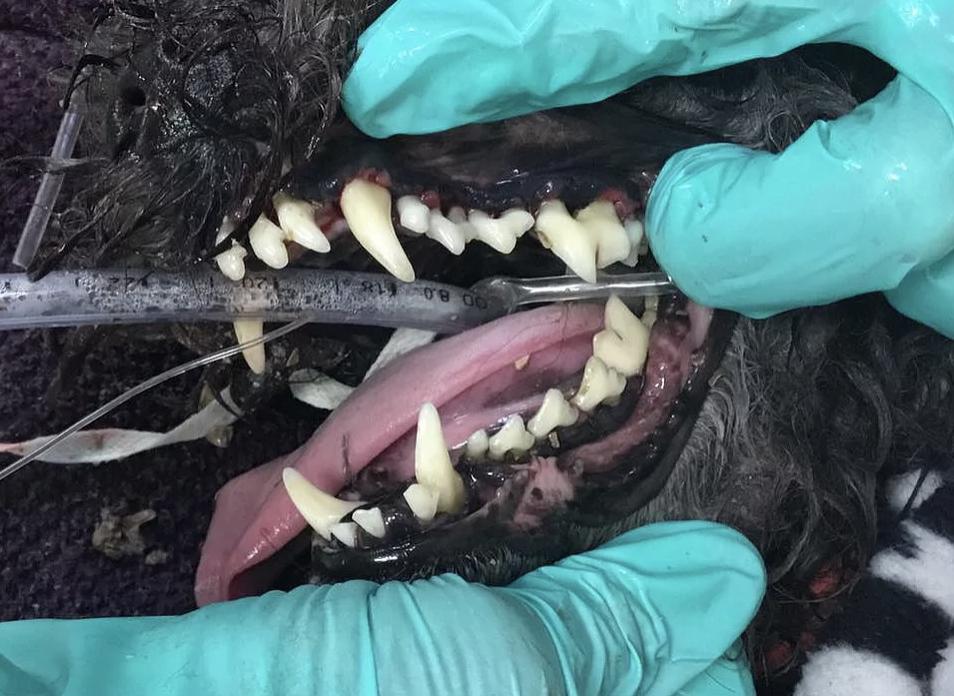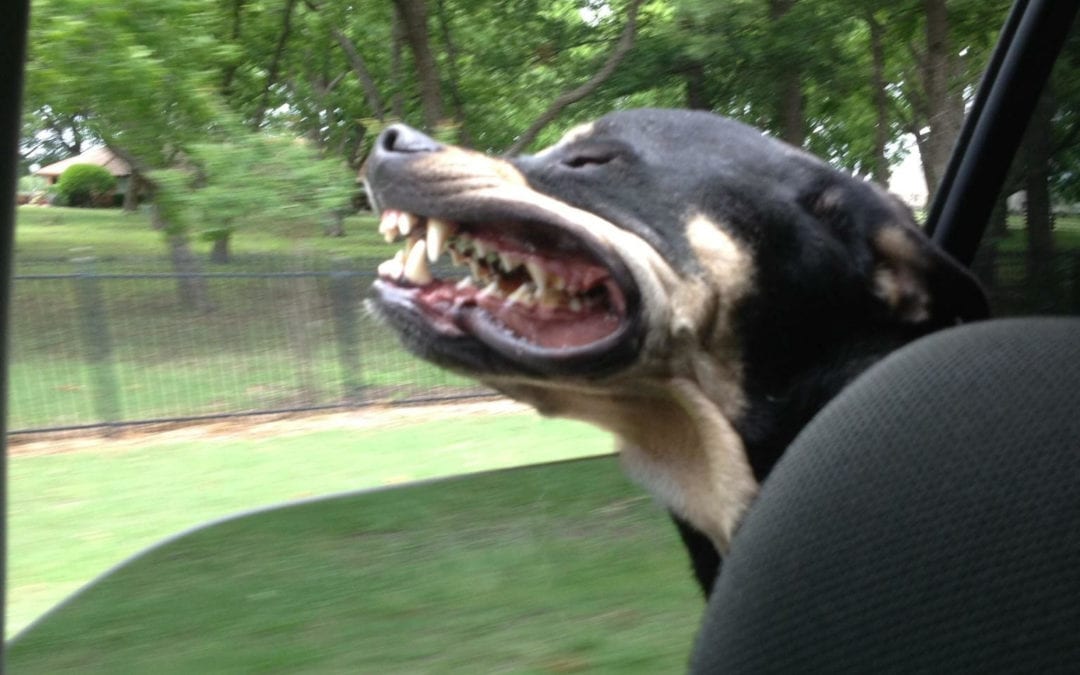February is Dental Awareness Month!
Just like in humans, dental health is often over looked or taken for granted. Dental health is a very important aspect for your pet’s overall health. Not only can dental problems be a source of pain for our pets, but poor dental health can also cause other health problems. Your pet’s teeth and gums should be examined at least once a year. Since our pets can’t tell us when something is wrong, yearly exams help us catch the early signs of disease, or other dental problems.
Here are a few signs that might indicate that your pet needs an oral health exam:
- Halitosis (bad breath)
- Broken or loose teeth
- Extra teeth or retained baby teeth (often need dental x-rays to diagnose)
- Teeth that are discolored or covered in tartar
- Abdominal chewing, drooling, or dropping food from the mouth
- Decreased appetite or refusing to eat
- Pain in or around the mouth
- Bleeding from the mouth
- Swelling in the area around the mouth or close to the eyes
- Changes in behavior that may indicate pain
Pets can have some of the same dental problems people experience such as bad breath or swelling that could indicate the presence of infection, palate deficits such as a cleft palate, and periodontal disease. Periodontal disease is very common in people and in pets, and it is the most common dental condition in cats and dogs. Studies show by the time your pet is 3 years old, they will likely have some early evidence of periodontal disease, which will continue to worsen, as they grow older. Early detection and treatment is critical since advanced periodontal disease can cause severe problems and pain for your pet. The bacteria associated with periodontal disease can cause changes in the kidney, liver and heart muscles. Long term infection can eat away and cause damage to the jawbone. The treatment for periodontal disease is a thorough dental cleaning and x-rays, which can be used to help determine the severity of the disease.
People are often surprised that veterinary dentistry is so important. Dentistry includes cleaning, fillings, extractions, and repairs of your pets’ teeth. A veterinarian performs dentals. A dental includes a pre-operative examination, IV catheter, and IV fluid therapy during and after the procedure, pre-operative antibiotics, full anesthesia monitoring, full oral exam with scale and polish, and oral antibiotics to take at home. Dental radiographs are recommended during dental cleanings as they allow veterinarians to view the internal anatomy of the teeth, the health of the jaw, and the tooth root beneath the gumline. Often, dental radiographs help to show evidence of disease below the gum line, which might not be visible during the exam.
What can you do at home to prevent common oral disease? Brushing your pets’ teeth at least 3 times a week is the most effective way to keep their teeth healthy between dental cleanings. Regular brushing may reduce the number of dental cleanings needed. Most dogs accept brushing with a little patience, positive reinforcement, and training. It’s best to make teeth brushing a positive experience for your pet.
In addition to teeth brushing, another form of dental care can be dental chews such as C.E.T HEXtra Chews, or the T.D Hill’s Science diet. These chews help mechanically break down tartar present on the teeth, and the C.E.T. chews have an antimicrobial called Chlorohexidine, an agent that kills or stops the growth of bacteria. These chews can help reduce plaque build up. For more information, check out our instructional video on brushing teeth! The video can be viewed on the Trophy Club Animal Hospital Facebook page. If you have any questions or concerns, or would like to schedule an exam to have your pet’s teeth examined, please do not hesitate to call. Help us put on your pet’s best smile every day!



